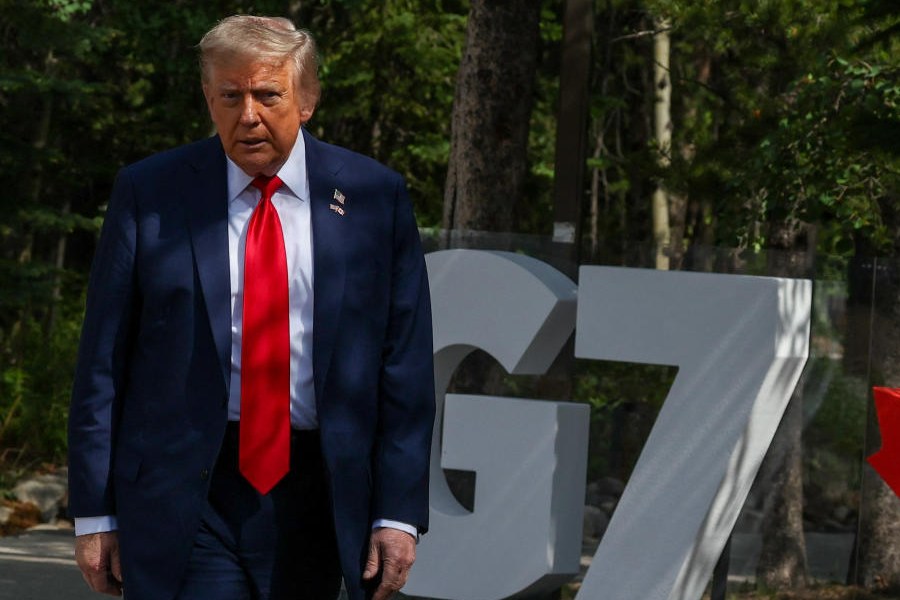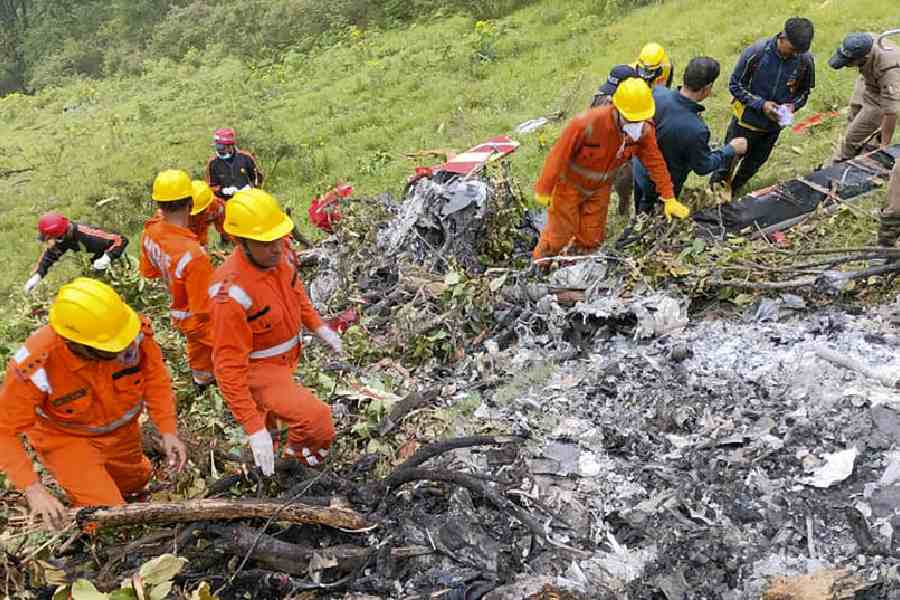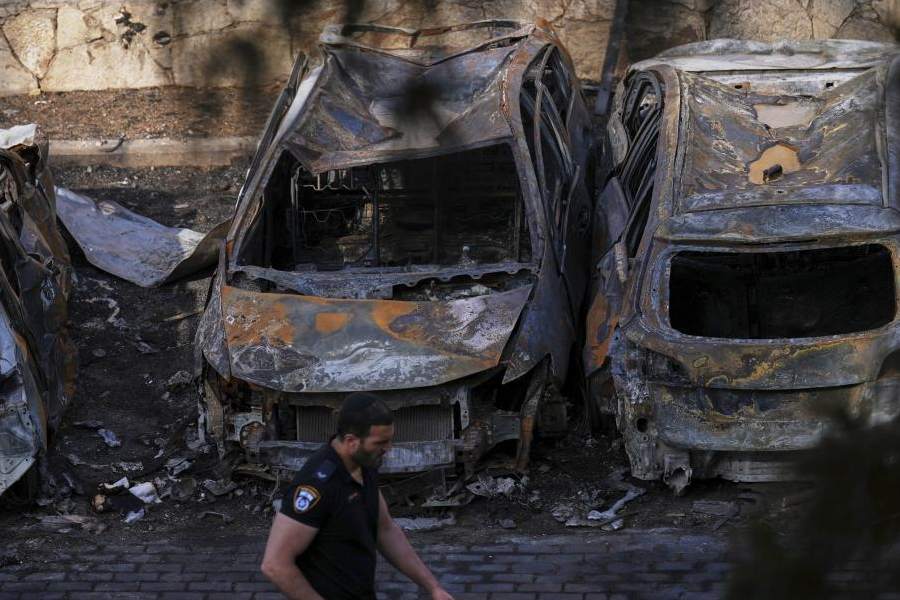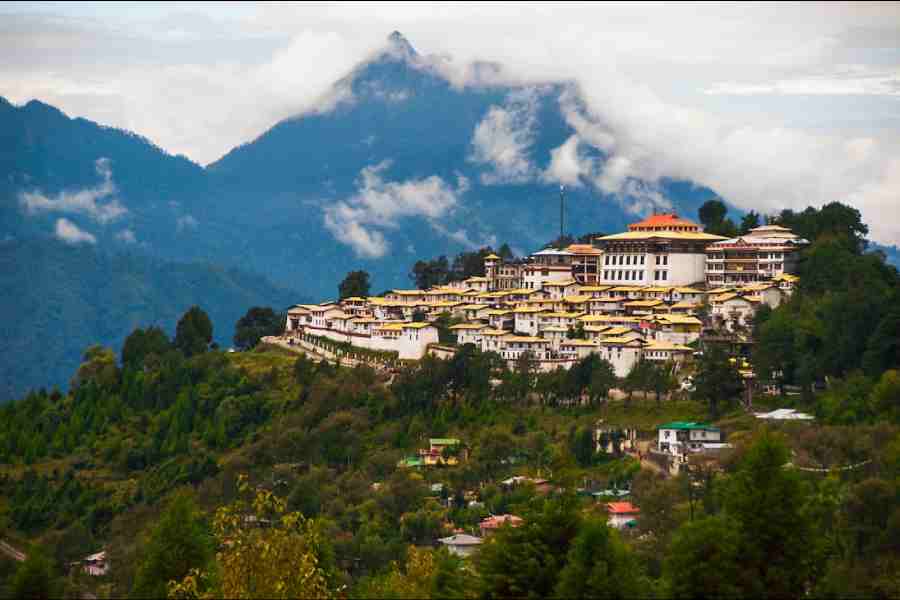|
|
 |
The first independent art exhibition by Afghan women that travelled to India recently turned out to be a memorable experience, and not merely for its aesthetic appeal. Other than in Delhi, the Indian Council for Cultural Relations hosted the show at the Rabindranath Tagore Centre in Calcutta (A New Start, September 19-27).
On the morning after the inauguration, when I visited the show, I was firmly told by the security guards at the entrance that no exhibition was on. By the time I had been able to convince them otherwise and make my way to the Nandalal Bose Gallery, I felt as if my efforts have been cruelly mocked. As always, the security men inside the gallery were chatting away unabashedly. The lights had not been switched on. Their clamour pierced through the silence that one anticipates before stepping inside a gallery, drowning that unspeaking eloquence of a room full of paintings, holding together the viewers, artists and their work in a bond of empathy and feelings.
To understand the full significance of the works, it is essential to be able to hear with one’s eyes the many voices that lurk among the paintings. (The curators should have been mindful of how the paintings were framed. Some of the frames were badly chipped along the edges.) All the participants of this show are affiliated to the Center for Contemporary Arts in Afghanistan, established in 2004. They are all below 30, and have little or no academic training. In a nation razed by the Soviet occupation, tribal conflict and now, by America’s War on Terror, the CCAA is a unique venture that intends not only to revive the rich tradition of the visual arts in Afghanistan, but also to usher in a humanist ethos — of democracy, equality and cosmopolitanism.
Modern Afghanistan may be known mainly for its misfortunes, but in the 16th century, the high noon of European Renaissance, the country was a seat of the fine arts. Kamaluddin Behzad, founder of the Herat school, was almost as great, though not as well-known, as his contemporaries — da Vinci, Raphael and Michelangelo. A pioneer of the miniature style, Behzad was famous for his technical mastery and for his philosophical approach. He turned the anomaly of figurative art in the Islamic tradition into a spiritual challenge, depicting the essence of reality instead of the form of things. Behzad’s heightened naturalistic style made its way into Europe in the 19th and 20th centuries, when Matisse, Klimt and Picasso were influenced by the East.
These indigenous influences and their European appropriations co-exist in the idiom used by the women artists of contemporary Afghanistan. This hugely complicated legacy becomes evident in an exceptional work like A beggar child (picture left) by Shabnam Roya — serene and meditative, yet filled with stricken turbulence. Staring out of a grid of interlocking geometric shapes, is an eye glistening with tear. While Shabnam Ibrahimy’s flamboyantly colourful Pioneer alludes to Picasso’s Man with guitar, 13-year-old Sara Nabil, the youngest participant, shows loss and turmoil as pure inscape in Which one? (picture right). Each is charged with a distinct touch of beauty, but the allure is not confined to the canvas itself. As Manezha Hewad, an artist and one of the founders of the CCAA, puts it, the intention is not to “reflect… beauty by appearance” but rather to “sacrifice beauty for concept”.
This movement from naturalism to abstraction is not just a theoretical leap for artists working in Islamic societies, but also a mode of reckoning with the strictures on representational art that are inscribed into their religion. As Rahwar Omarzad, the director of the CCAA, says, “If the pictorial arts in our country had more verity of style and technique, the visual arts would not have been forbidden during the Taliban regime.” For this “verity” to make its way into the creative consciousness, ideas and images have to travel freely. This open traffic of ideas could not take off until the oppressive Taliban rule ended in 2001. Since liberation, with a trail of devastation left behind, a history of emotions, which have so far remained suppressed, has started emerging at last.
The miserable condition of women in the Taliban days are captured either symbolically (by Shekeba Saifi, Asiya Mohebi, Yalda Noori and Mariam Formuli) or quite literally (by Zarghuna Hotak, Fareeha Ghezal and Ommolbanin (Shamsia) Hassani). Stepping out of the shadow of patriarchy (though every artist’s biography in the catalogue includes her father’s name), out of a terrible past into a new beginning, these women are artists of a fleeting world — still beyond the pull of the market, absorbed only in the magic of the making.











